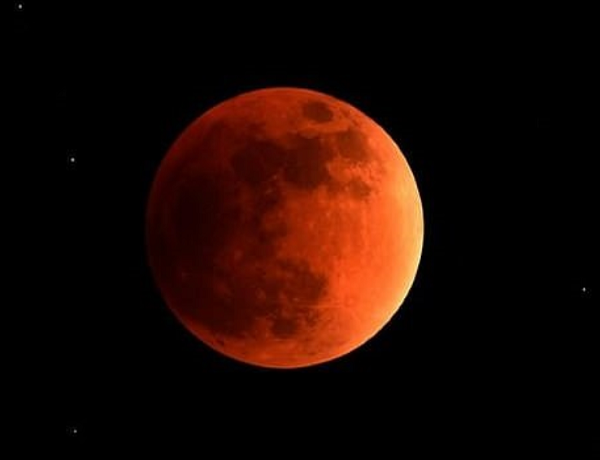It was a treat for stargazers with lakhs of people witnessing the longest ‘blood moon’ eclipse that began on Friday night and ended in the wee hours of Saturday morning. The celestial event was visible in the whole of the country besides in parts of South America, Africa, West Asia and Central Asia.
While the partial lunar eclipse began at 11:54 pm yesterday (July 27), the total eclipse began at 1 am (July 28) and continued till 2:43 am. The moon then remained partially eclipsed till 3:49 am Saturday morning.
#LunarEclipse | The #BloodMoon. Latest visuals of #lunareclipse2018 through Nehru Planetarium, Delhi. (Source NASA & ANI) pic.twitter.com/ZV4jt8hDGU
— NEWS LIVE (@NewsLiveGhy) July 27, 2018
#InPics | The moon partially hidden by clouds in #Guwahati during the #LunarEclipse.#lunareclipse2018 #ChandraGrahan pic.twitter.com/xpSEklL7Ag
— NEWS LIVE (@NewsLiveGhy) July 27, 2018
Arrangements were made at various planetariums, including the planetarium in Guwahati, where thousands of astro-enthusiasts viewed the eclipse through high-end binoculars and telescopes.
“It feels so great to witness the rare event. It’s the longest lunar eclipse of the century. The moon turned blood red after the total eclipse began,” a college student told News Live at the Guwahati Planetarium.
What’s a blood Moon? How does the science behind an #eclipse work? Right now, a #LunarEclipse is underway in the sky over much of Earth’s population except North & Central America. Get the answers to these & other questions about this celestial event: https://t.co/Uy2j0hfHRj pic.twitter.com/dEk1vN3goo
— NASA (@NASA) July 27, 2018
RELATED VIDEO:
A cloudy sky in Guwahati and in some other parts of Assam and the Northeast played some spoilsport as clouds hid the moon for quite some time during the eclipse.
Meanwhile, people took a dip at the Ganga and other rivers during the eclipse as it is considered auspicious according to Hindu mythology and traditions.





